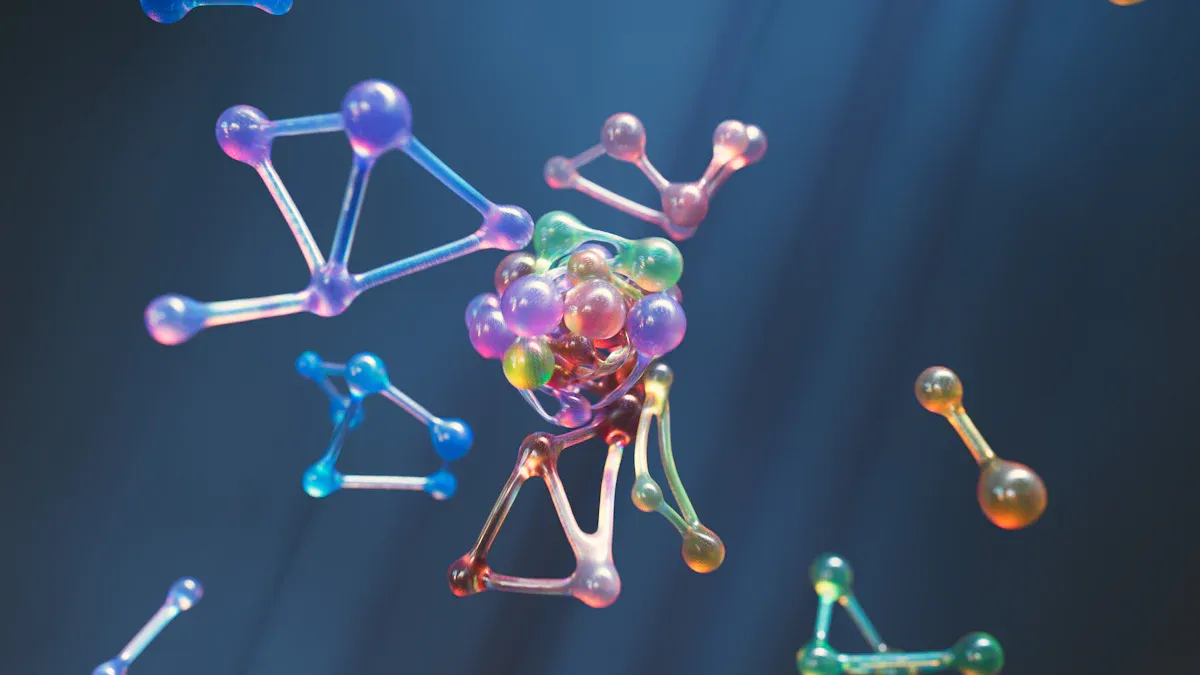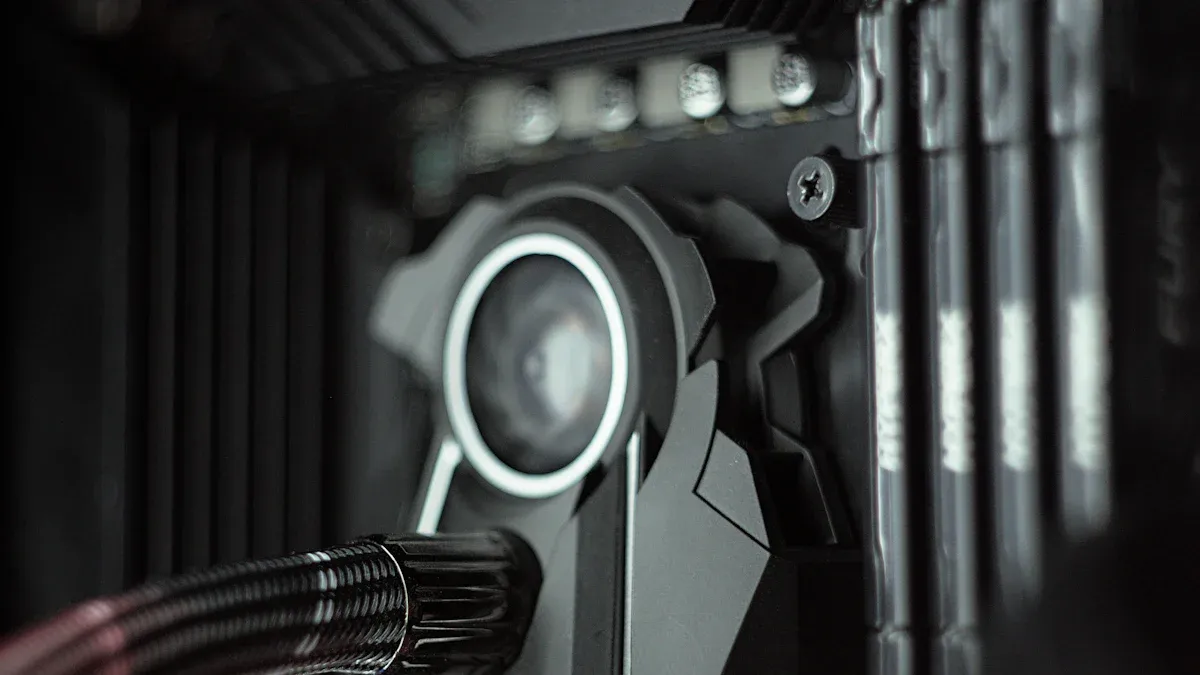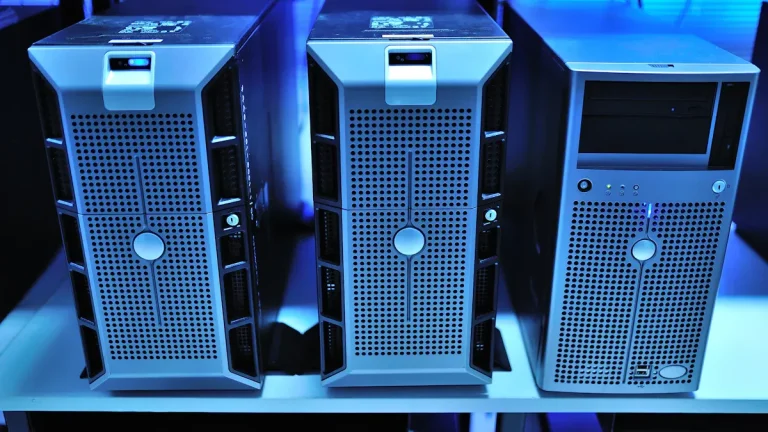
You need a battery that can deliver reliable low-temperature performance when lighting systems operate in Arctic environments. Extreme cold challenges both energy output and safety, making chemistry selection critical. Lithium-ion batteries stand out for their efficiency and durability, but you should also consider other lithium chemistries designed for harsh climates. Always prioritize solutions that offer stable operation and meet strict safety standards.
Key Takeaways
Choose lithium-ion batteries designed for low temperatures. They offer better performance and longer life in extreme cold.
Look for batteries with strong cold start capabilities. This ensures your lighting systems activate reliably after exposure to freezing conditions.
Prioritize batteries with high capacity retention. This feature reduces maintenance needs and extends the time between replacements.
Ensure safety features are included in your battery selection. Built-in protections help prevent overheating and other risks in harsh environments.
Regular maintenance and insulation are crucial. They help maintain battery performance and safety in Arctic conditions.
Part 1: Battery Characteristics
1.1 Low-Temperature Performance
You need to understand how low-temperature performance affects the reliability of lithium-ion batteries in Arctic lighting systems. When you deploy batteries in environments where temperatures drop far below freezing, several physical and chemical changes occur. These changes impact how well your battery delivers power and how long it lasts.
Low temperatures reduce lithium ion mobility, which slows down charge and discharge rates.
Internal resistance increases in cold conditions, so energy availability and efficiency drop.
Battery capacity can decrease by 20-50% in sub-zero temperatures, which shortens lifespan.
Prolonged exposure to cold accelerates degradation, causing batteries to fail sooner.
Repeated thermal cycling leads to physical and chemical changes, further harming battery health.
You should select lithium-ion batteries engineered for low-temperature performance. Low-temperature LIBs use advanced electrolytes and separators to maintain function in extreme cold. These batteries deliver more stable output and retain capacity better than standard lithium-ion batteries. You can expect low-temperature LIBs to support Arctic lighting systems with fewer interruptions and longer service life.
1.2 Cold Start
Cold start capability is essential for Arctic lighting systems. You need batteries that can deliver power immediately after exposure to low temperature. Standard lithium-ion batteries often struggle to start in cold conditions because the chemical reactions slow down. Low-temperature LIBs overcome this challenge by using optimized materials that allow for faster ion movement. When you choose batteries with strong cold start performance, your lighting systems will activate reliably, even after long periods in freezing environments.
1.3 Discharge Stability
Discharge stability ensures that your lighting systems receive consistent power output, regardless of temperature fluctuations. In low temperature, many batteries experience voltage drops and erratic discharge rates. Low-temperature LIBs maintain stable voltage and current delivery, which keeps your lighting systems running smoothly. You should look for lithium-ion batteries with proven discharge stability in cold climates. These batteries minimize the risk of flickering or sudden shutdowns, which is critical for safety and operational reliability.
1.4 Capacity Retention
Capacity retention measures how well a battery holds its charge over time, especially in low temperature. Arctic conditions can cause rapid loss of capacity in standard lithium-ion batteries. Low-temperature LIBs retain more of their original capacity, even after repeated exposure to cold. You should prioritize batteries with high capacity retention ratings for Arctic lighting systems. This feature reduces maintenance needs and extends the interval between battery replacements.
1.5 Safety
Safety is a top priority when you operate lithium-ion batteries in Arctic environments. Low temperature can mask early warning signs of battery failure, making it harder to detect problems. You must consider the most common safety risks:
Safety Risk | Description |
|---|---|
Thermal Runaway | An uncontrollable, self-heating state that can lead to fire and explosion risks. |
Overheating | Occurs when charging and discharging exceed safe limits, leading to internal damage. |
Short-Circuiting | Can happen due to mechanical abuse or manufacturing defects, leading to thermal runaway. |
Fire Suppression Challenges | Fires from lithium-ion batteries are difficult to extinguish and can burn extremely hot. |
Emissions during Incidents | Smoke and vent-gases from battery fires present inhalation health hazards. |
You should choose lithium-ion batteries with built-in safety features, such as thermal protection, robust separators, and advanced battery management systems. These features help prevent overheating, short-circuiting, and other risks. Low-temperature LIBs often include extra safeguards to ensure safe operation in cold climates. You can improve safety by following manufacturer guidelines and conducting regular inspections.
Tip: Always verify that your lithium-ion batteries meet international safety standards for low-temperature performance before deploying them in Arctic lighting systems.
Part 2: Battery Chemistries

2.1 Lithium-Ion Batteries
You rely on lithium-ion batteries for Arctic lighting systems because they deliver high energy density and stable low-temperature performance. These batteries use advanced materials and electrolytes to maintain function when exposed to low temperature. You see consistent discharge rates and reliable capacity retention, which supports uninterrupted lighting in harsh environments.
Range | |
|---|---|
Discharge | -4° F to 130° F |
Charge | 32° F to 114° F |
Storage | 20° F to 95° F |
You must pay close attention to charging protocols in low temperature. Charging lithium-ion batteries below 0°C reduces efficiency and can damage cells. You need a battery management system (BMS) to control heating and charging. The BMS raises battery temperature from -20°C to +5°C in about 40 minutes before charging starts. Charging rates drop significantly in low temperature. Between 32°F and 14°F, you should use a maximum charging rate of 0.1C. Between 14°F and -4°F, the rate drops to 0.05C. Charging at these rates takes longer and increases uncertainty about temperature changes.
Lithium-ion batteries show lower capacity in cold weather.
A fully charged battery delivers less energy when exposed to low temperature.
Charging below 0°C requires careful management to prevent damage.
You benefit from lithium-ion batteries because they offer low self-discharge, no memory effect, and fast charging. You must consider safety features, such as thermal protection and robust separators, to prevent thermal runaway. You should select low-temperature LIBs for Arctic lighting systems to maximize reliability and safety.
2.2 Lithium Primary Cells
You use lithium primary cells, such as lithium/thionyl chloride (Li/SOCl2), for applications that demand long shelf life and stable voltage in low temperature. These batteries do not require charging, which simplifies system design in Arctic conditions. You see excellent voltage stability across a broad temperature range, including extreme cold down to -30°C. This stability is crucial for lighting systems that must operate reliably without frequent maintenance.
You choose lithium primary cells when you need consistent low-temperature performance and minimal maintenance. You must consider that these batteries are single-use and cannot be recharged. You rely on their high energy density and long operational life for remote or critical lighting installations.
2.3 Nickel-Cadmium
You select nickel-cadmium (NiCd) batteries for Arctic lighting systems when you need rugged performance and tolerance to deep discharge events. NiCd batteries operate at low temperature, but their performance drops to about 50% at -20°C (-4°F). You can use them down to -40°C (-40°F), but you must limit the discharge rate to 0.2C (5-hour rate).
NiCd batteries offer cycle life from 500 to 1,000 cycles or more.
Proper charging and discharging practices extend cycle life.
NiCd batteries handle deep discharge events better than many other chemistries.
You must manage the memory effect and higher self-discharge rate. You also need to address environmental concerns due to toxic materials. You rely on NiCd batteries for emergency backup power and applications where low-temperature performance and durability matter more than energy density.
2.4 Comparison
You compare battery chemistries to select the best option for Arctic lighting systems. Each chemistry offers unique advantages and challenges in low temperature.
Parameter | Lithium-Ion Battery | Nickel-Cadmium Battery |
|---|---|---|
Energy Density | High | Moderate |
Self-Discharge Rate | Low | High |
Memory Effect | None | Significant |
Environmental Impact | Low | High |
Cost | Expensive | Affordable |
Cycle Life | High | Moderate |
Charging Time | Fast | Slow |
Operating Temperature | Wide range | Limited |
Safety | Safe with proper handling | Risk of overheating and explosion |
Applications | Consumer electronics, electric vehicles, renewable energy storage | Emergency backup power, power tools, medical equipment |
Lithium-ion batteries provide high energy density, low self-discharge, and fast charging. You must address safety concerns, such as thermal runaway, especially in low temperature.
Nickel-cadmium batteries operate in extreme cold and offer long cycle life. You must manage memory effect and environmental impact.
Lithium primary cells deliver excellent voltage stability and long shelf life in low temperature. You use them for applications where maintenance is difficult and reliability is critical.
Tip: You should always match battery chemistry to your specific Arctic lighting requirements. Consider low-temperature performance, safety, maintenance needs, and operational costs before making your selection.
Part 3: System Design

3.1 Insulation
You need effective insulation to maintain battery temperature in Arctic lighting systems. Insulation protects lithium battery packs from extreme cold, which helps preserve energy output and extends battery life. You can select from several materials for battery enclosures. The table below shows common options:
Insulation Material | Description |
|---|---|
XPS Foam Board | A half inch of XPS foam board works well as an outer layer and provides strong insulation. |
Polyiso Board | Use polyiso board for additional thickness. It offers a high R-value and improves thermal protection. |
Aerogel | Aerogel is lightweight and effective for small enclosures. It is cost-effective for projects under $100. |
You should use a thickness of 10 mm for insulation material. This thickness warms the battery and improves performance in subzero environments. Thicker insulation layers separate batteries and slow heat transfer, which helps prevent thermal runaway from spreading between adjacent cells. Insulation does not stop thermal runaway, but it gives you more time to respond to incidents.
Tip: Insulating lithium battery packs protects them from freezing and keeps your Arctic lighting systems running efficiently.
3.2 Battery Management
You need a robust battery management system (BMS) for Arctic lighting applications. A BMS monitors and controls lithium battery packs, ensuring safe and reliable operation in harsh conditions. The table below highlights key BMS features:
Feature | Description |
|---|---|
Advanced Thermal Management | Monitors temperature and uses active cooling to keep batteries at optimal levels. |
Real-time Monitoring | Tracks battery health and performance, which is vital for adapting to Arctic environments. |
Predictive Maintenance | Uses algorithms to forecast issues and extend battery lifespan. |
Safety Mechanisms | Detects faults and protects against overcharging, over-discharging, and short circuits. |
You find BMS technology essential in industries such as medical, robotics, security systems, infrastructure, consumer electronics, and industrial automation. For more details, see Battery Management System (BMS) for Lithium Battery Packs. A BMS helps you maintain platform voltage, energy density, and cycle life for lithium battery chemistries, which supports reliable lighting in Arctic conditions.
3.3 Maintenance
You must follow a strict maintenance schedule to ensure battery reliability in extreme cold. The table below outlines recommended intervals:
Maintenance Activity | Frequency | Notes |
|---|---|---|
Initial Installation | Upon installation | Expect a battery lifespan of 3 to 5 years, which may be shorter in harsh environments. |
Annual Testing | Annually | Simulate a power outage and replace failing batteries immediately. |
Bi-annual Inspections | Every 6 months | Check for physical issues such as swelling or leakage. |
Regular inspections help you identify problems early. Smart chargers adjust charging rates based on temperature, which prevents damage from rapid charging in cold conditions. Insulating batteries also maintains operational efficiency and protects against freezing.
Note: Preventive maintenance increases reliability and reduces downtime for lithium battery packs in Arctic lighting systems.
Part 4: Selection Tips
4.1 Performance Testing
You need to evaluate lithium battery packs for energy-storage in low-temperature applications using rigorous cold testing. Standardized tests often fail to reflect real-world performance, especially in extreme environments like the Arctic. You should focus on application-specific testing to ensure batteries meet your operational needs.
Test batteries under actual environmental conditions, not just laboratory settings.
Monitor performance during repeated thermal cycles to assess durability.
Compare results from different chemistries, such as lithium-ion and nickel-cadmium, to identify the best fit for your energy-storage requirements.
Document voltage stability, discharge rates, and high energy density retention during cold testing.
Tip: Application-oriented tests help you verify that your energy-storage solution will perform reliably in low-temperature applications.
4.2 Manufacturer Specs
You must interpret manufacturer specifications carefully when selecting batteries for energy-storage in Arctic lighting systems. Specifications often provide minimum performance metrics, but real-world results can differ due to the environment.
Metric | Specification |
|---|---|
Minimum charge retention | 80% of initial charge energy |
Minimum discharge retention | 75% of initial discharge energy |
Minimum energy efficiency | 75% |
You should request detailed test data from manufacturers, focusing on energy-storage performance in low-temperature applications and extreme environments. Ask about sustainability practices and conflict minerals compliance to ensure your supply chain meets regulatory standards. For more information, see Sustainability in Battery Manufacturing and Conflict Minerals Policy.
Note: Always verify that lithium battery packs deliver high energy density and meet safety standards in your specific environment.
4.3 Low Temperature Cases
You can learn from real-world cases where energy-storage systems operate in extreme environments. For example, Arctic research stations use lithium-ion battery packs with high energy density to power lighting and equipment. These systems undergo cold testing to confirm performance in low-temperature applications.
Choose batteries with proven track records in similar environments.
Review case studies that detail maintenance schedules, safety protocols, and energy-storage outcomes.
Prioritize chemistries that maintain high energy density and stable output in extreme environments.
Tip: Real-world examples help you select energy-storage solutions that deliver reliable performance and safety in the harshest conditions.
You must consider several factors when selecting batteries for Arctic lighting systems. Reliable operation depends on how batteries handle low temperature, retain capacity, and maintain safety. Choose proven chemistries like lithium-ion or nickel-cadmium for extreme cold. Use charge regulators with temperature compensation and select components rated for harsh environments. The table below highlights key considerations:
Factor | Importance |
|---|---|
Ensures optimal battery performance in Arctic conditions | |
Battery Capacity | Prevents over-discharging and freezing |
Chemistry Selection | Matches battery type to operational needs |
System Design | Supports safe and efficient battery management |
Tip: Always test batteries in real-world conditions before deployment.
FAQ
What is the best lithium battery chemistry for Arctic lighting systems?
You should choose lithium-ion batteries engineered for low-temperature performance. These batteries offer high energy density, stable discharge, and strong safety features. Lithium primary cells also work well for long-term, maintenance-free applications in extreme cold.
How does low temperature affect lithium battery packs?
Low temperature slows lithium ion movement and increases internal resistance. You will see reduced capacity, slower charging, and shorter cycle life. Always select batteries rated for subzero operation to maintain reliable performance.
Can you charge lithium-ion batteries below freezing?
You should avoid charging lithium-ion batteries below 0°C (32°F). Charging at low temperature can cause permanent damage. Use a battery management system to warm the pack before charging. This step protects your investment and ensures safety.
What maintenance do lithium battery packs need in Arctic environments?
You need to inspect battery packs every six months. Test capacity, check for swelling or leaks, and verify insulation. Schedule annual performance tests to catch issues early. Preventive maintenance extends service life and reduces downtime.
Why is insulation important for lithium battery packs in cold climates?
Insulation keeps battery packs within their optimal temperature range. You prevent freezing, maintain energy output, and reduce the risk of thermal runaway spreading. Use materials like XPS foam or aerogel for effective thermal protection.






